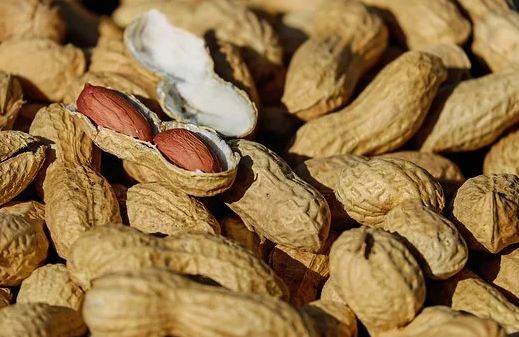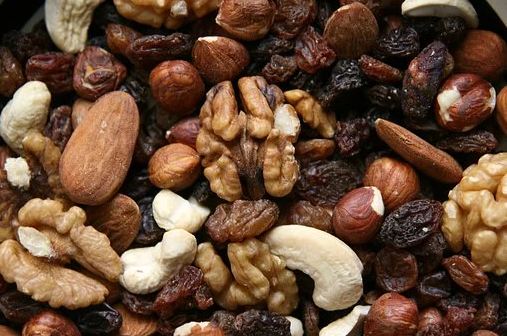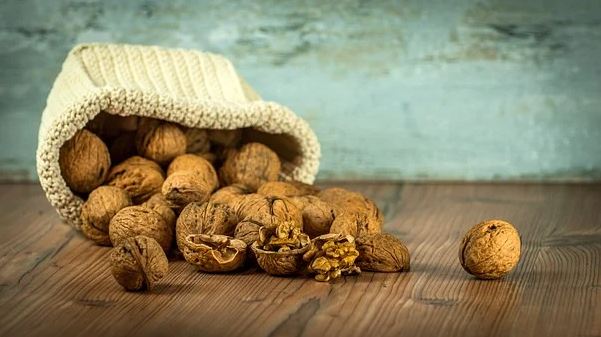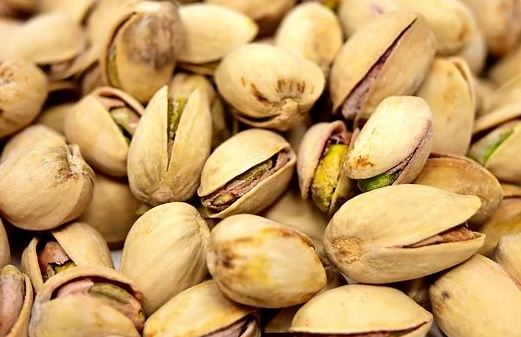Nuts are the best snack item, particularly in the winter season. However, you can eat them in other seasons as well if you are able to find the right ones. Nuts contain essential vitamins and minerals that provide you with various health benefits as well. Here are some of the most commonly consumed nuts and a list of their various benefits and drawbacks.
Types of Nuts
Peanuts
Peanut is a legume crop, grown in tropical and subtropical regions, and is famous for its edible seeds. The plant belongs to the bean family, and cannot be technically called a nut. The shelled peanuts we eat actually grow beneath the soil, which is why the entire plant has to be ripped out to harvest them. These peanuts are roasted with their shells on them. Then, they are peeled and eaten, either plain or flavored.
Benefits
- Peanuts lower bad cholesterol in the body and promote heart health.
- Consuming peanuts can also help in losing weight.
- Peanut consumption helps fight gallstones.
- They combat cancer, due to the isoflavones, resveratrol, and phenolic acid found in them.
- Eating peanuts helps control blood sugar levels.
- Peanuts may also protect against Alzheimer’s disease.
Side Effects
- Peanuts can sometimes be contaminated by a species of mold called Aspergillus flavus, which produces aflatoxin. This causes a lack of appetite and jaundice.
- Anti-nutrients like phytic acid, which is found at about 0.2-4.5% in peanuts, are another big concern.
- A large population of the world is also allergic to peanuts, with varying degrees of severity.
Cashew Nuts
Cashews are one of the most famous nuts of all time. They are seeds of the cashew apple, grown on cashew trees. Cashew trees, also called Anacardium occidentale, are native to Brazil and can grow up to 14 m. The cashew apple is picked from the tree with the seed still attached. The fruit is then frozen, and then the seed is then removed, dried, and steamed. For consumption, the fruit is roasted, and salted, before it is packaged and sold.
Benefits
- Like peanuts, cashew nuts also lower cholesterol content and promote heart health.
- Cashew nuts prevent oxidative stress, vascular reactivity, and inflammation.
- The high copper content in cashews helps prevent blood diseases.
- Cashews protect the eyes from infections, due to the pigment ZeaXanthin.
- Rich in selenium, magnesium, zinc, iron, and phosphorus, cashews are amazing for the skin.
Side Effects
- Can cause bloating, and constipation.
- Overconsumption can cause weight gain.
- Cashews can cause joint swelling in some people.
- Applying roasted cashews to the skin may cause irritation and blisters.
Candlenuts
Candlenuts are harvested from the flowering tree Aleurites moluccana, which belongs to the Euphorbiaceae family. The tree has pale green leaves, which are 20 cm long and 13 cm wide. The seeds are drupes, and the hard shells have to be cracked to obtain the kernel inside. The kernel is used to make candlenut oil.
Benefits
- Improve the digestive system because of their high fiber content.
- Candlenut oil is also said to be extremely beneficial against fungal infections.
- By increasing, the good cholesterol in the body candlenuts reduce risks of heart diseases.
- Candlenuts contain melatonin which makes you relax and can help against insomnia.
Side Effects
- Raw candlenuts can be toxic, and should never be consumed.
- Overeating can lead to weight gain.
Walnuts
Walnuts can be harvested from any trees of the genus Juglans. When ripe, the husk of the walnut fruits cracks open to reveal the seed inside. This seed is cracked to obtain the meat in it. The shell is discarded, and the meat is used. This can be added to sweet dishes, or used as a garnish for a lot of food. The meat inside the walnut can be eaten raw or can be used to make walnut oil too.
In the market, walnuts are sold both increased and de-shelled. You can store these walnuts to −3 to 0 °C (27 to 32 °F), in areas of low humidity. Walnuts spoil at temperatures above 30 °C (86 °F), and humidity above 70 %.
Nutritional Content
Benefits
- Walnuts are rich in antioxidants.
- They are an amazing source of Omega 3.
- Walnuts have anti-inflammatory properties.
- Consuming walnuts regularly helps promote gut health.
- Walnuts can decrease the risk of breast cancer, prostate cancer, colorectal cancers, and more.
Side Effects
- Walnuts can be a cause of bloating and weight gain.
- English walnuts can also be a cause of allergic reactions in some people.
- The high content of fiber in walnuts can also cause diarrhea.
Pistachios
The pistachio tree is part of the cashew family and is native to central Asia, and the Middle East. Once picked, the pistachios are then dried and processed to remove the husk. This leaves behind the shell and the meat. These are roasted and can be sold either plain or salted.
Benefits
- Pistachios lower the risk of cardiovascular diseases
- The high content of fibers, minerals, and unsaturated fats helps keep blood sugar, blood pressure, and cholesterol in check.
- Pistachios have a lot of protein
Side Effects
- Diarrhea
- Kidney damage
- Constipation
- Bloating
Comparison of the Different Types of Nuts | |||||
Name of Nut | Nutritional Content (100g) | Areas Where They Are Grown | Benefits | Side Effects | Amount You Can Have In a Day |
Peanuts |
|
|
| Phytic acid Aflatoxin content Peanut allergies | 1-2 ounces, or a handful |
Cashews |
|
|
| Bloating and constipation Weight gain Joint swelling Can blisters on the skin | 5 cashews a day to avoid weight gain |
Candlenut |
|
|
| Raw candlenuts are toxic Weight gain | A handful |
Walnuts |
|
|
| Bloating Weight gain Allergic reaction Diarrhea | 7-10 whole walnuts |
Pistachios |
|
|
| Bad breath Diarrhea Kidney damage Constipation Bloating | 30 kernels |
Conclusion
There are several types of nuts that you can eat and gain some of the vital nutrients in an organic manner. Even in smaller quantities, nuts are quite healthy and will help you fulfill the daily vitamin and mineral intake essential for the human body. We recommend that you try out the various options mentioned above to enjoy a great experience eating nuts.





